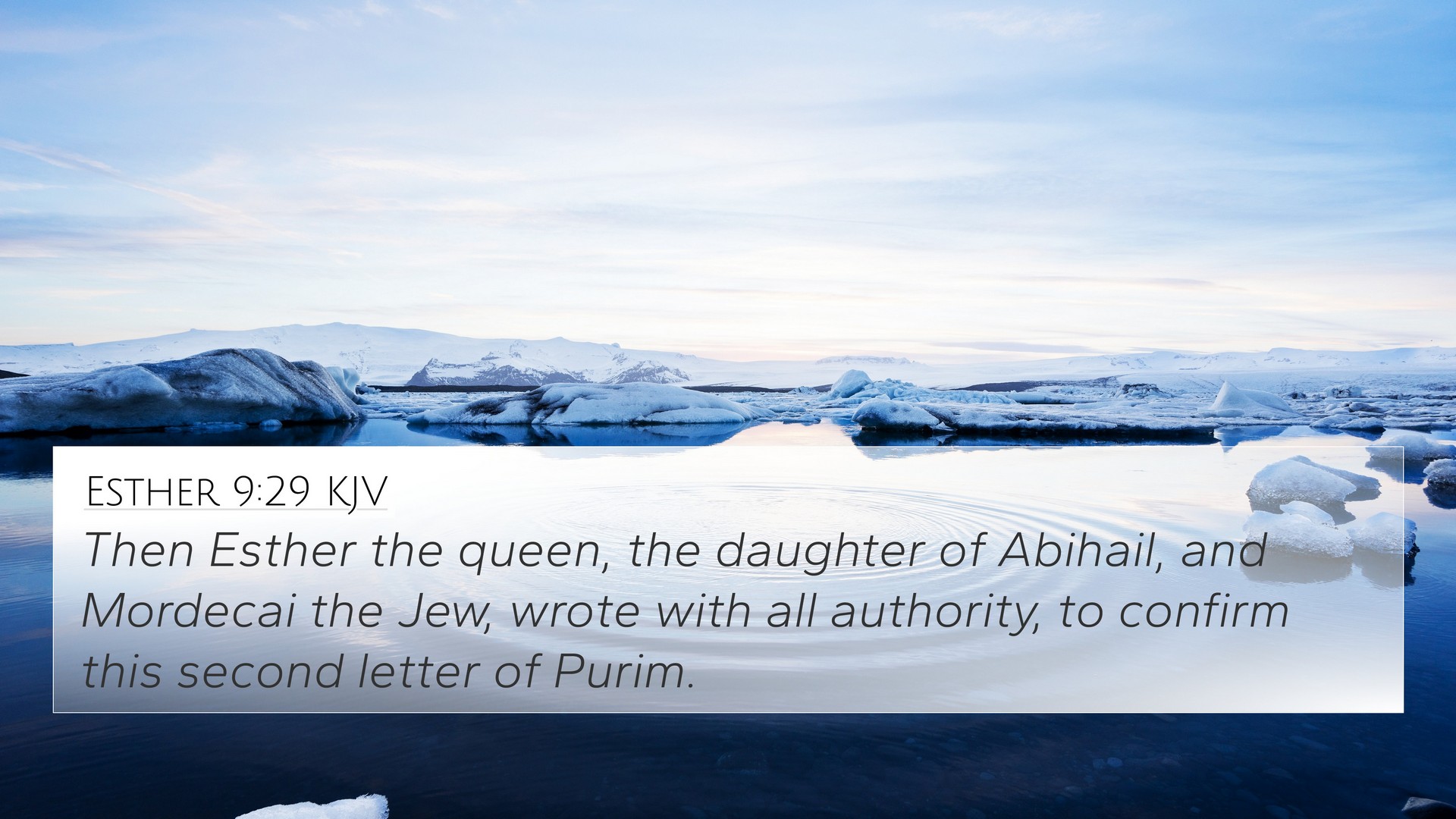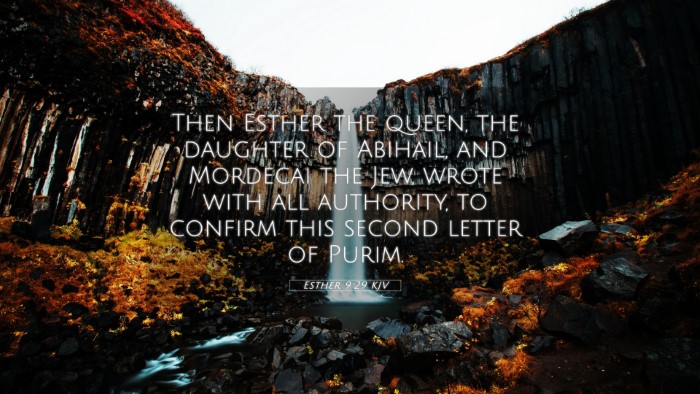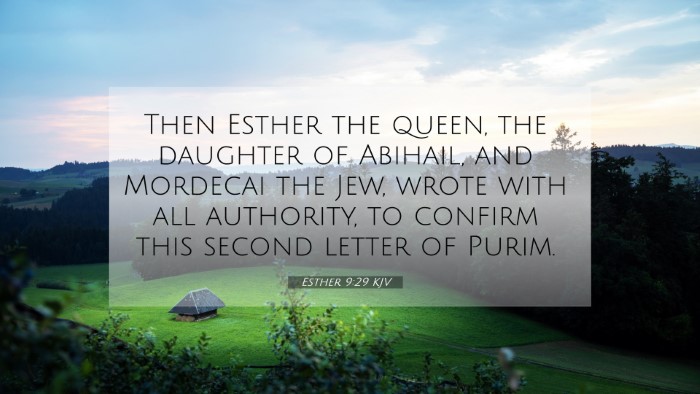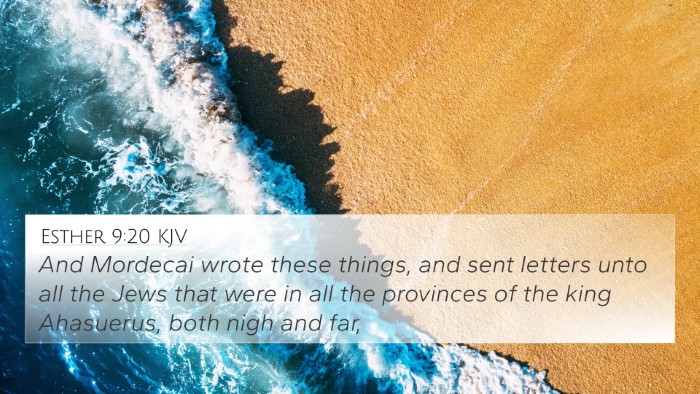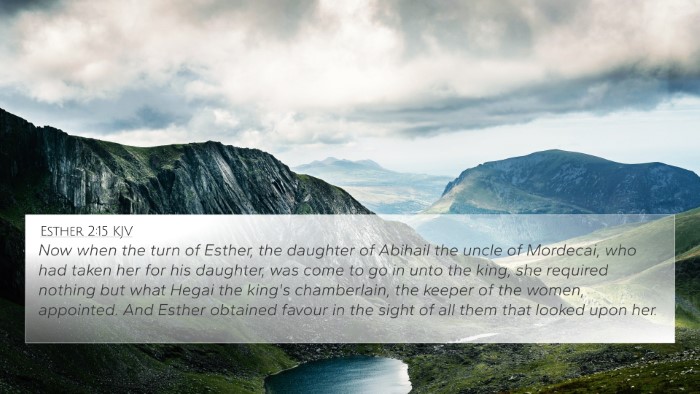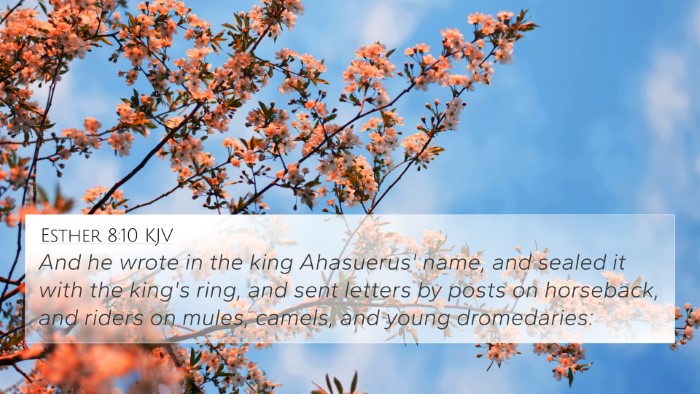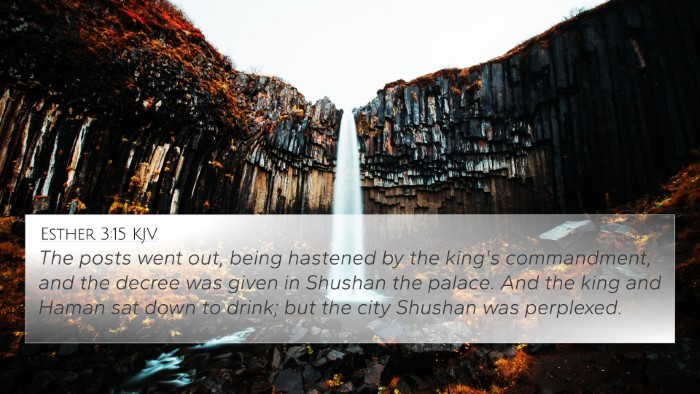Understanding Esther 9:29
Esther 9:29 is a significant verse that encapsulates the themes of celebration, remembrance, and the establishment of Jewish traditions after a period of turmoil. This verse is often analyzed in the context of the broader narrative of the Book of Esther and the historic and religious implications of the events it describes.
Verse Text
Esther 9:29 (KJV): “Then Esther the queen, the daughter of Abihail, and Mordecai the Jew, wrote with all authority to confirm this second letter of Purim.”
Summary of Interpretations
In this verse, we find Esther and Mordecai officially establishing the observance of Purim, a festival commemorating the deliverance of the Jewish people from impending annihilation. This act symbolizes not only the triumph of the Jewish community but also serves as a reminder of God's providential care.
Commentary Insights
-
Matthew Henry:
Henry emphasizes Esther's role as a leader and how her and Mordecai's decree aimed to solidify the remembrance of the events of Purim. The letter confirms the joy and celebration of the Jewish people, reflecting their deliverance and the divine protection they experienced.
-
Albert Barnes:
Barnes notes the importance of establishing a formal recognition of Purim. He reflects on the significance of this festival within Jewish culture as a means of fostering unity and reinforcing the community's identity in the face of adversity.
-
Adam Clarke:
Clarke provides a historical perspective, discussing the origins of Purim and how the decree served to perpetuate the memory of divine intervention. He highlights the importance of preserving the narrative for future generations to understand their heritage.
Thematic Connections
Esther 9:29 serves as a crucial junction for establishing connections between various biblical themes such as divine providence, deliverance, and communal celebration. The following cross-referenced verses encapsulate similar themes:
- Exodus 12:14 - The commemoration of Passover as an act of remembrance of God’s deliverance.
- Psalm 30:11-12 - A song of thanksgiving for deliverance, echoing themes of joy and celebration.
- Nehemiah 8:10 - The call to celebrate and rejoice for the joy of the Lord is their strength.
- Isaiah 61:3 - Bringing joy instead of mourning, celebrating God’s restoration.
- Luke 22:19 - The institution of the Lord’s Supper, serving as a remembrance of Christ’s sacrifice.
- 1 Corinthians 11:24-25 - Paul’s instructions on remembering the Lord’s death through communion.
- Hebrews 10:24-25 - Encouragement for community gatherings and mutual edification.
Cross-Referencing Biblical Texts
This verse not only stands on its own but is deeply enriched by connections across the scriptures. Understanding these links can deepen one's comprehension of biblical narratives and themes:
-
Thematic Bible verse connections:
- Deliverance from oppression (e.g., Exodus).
- Community celebration (e.g., feasts in the Gospels).
-
Comparative Bible verse analysis:
- Comparison of Esther's role as a savior-like figure to that of Moses.
- Exploring the fulfillment of promises of protection seen in Deuteronomy.
Identifying Connections Across Testaments
Understanding Esther 9:29 also invites the exploration of connections between the Old and New Testaments. These intersections enrich the narrative and showcase a cohesive story of God’s interaction with humanity:
- Inter-Biblical dialogue:
The understanding of deliverance in Esther parallel to the deliverance brought by Christ in the New Testament.
- Links between Prophets and Apostolic teachings:
The prophetic assurances of protection resonate with Christ's teachings of hope and deliverance during adversity.
Conclusion
Esther 9:29 serves as a powerful reminder of the significance of remembrance and celebration in the life of faith. The establishment of the festival of Purim by Esther and Mordecai stands as a testament to the Jewish identity, embodying themes of divine protection and communal joy. Cross-referencing this verse with others enhances our understanding of biblical themes and principles, allowing us to appreciate the depth and interconnectedness of scripture.
